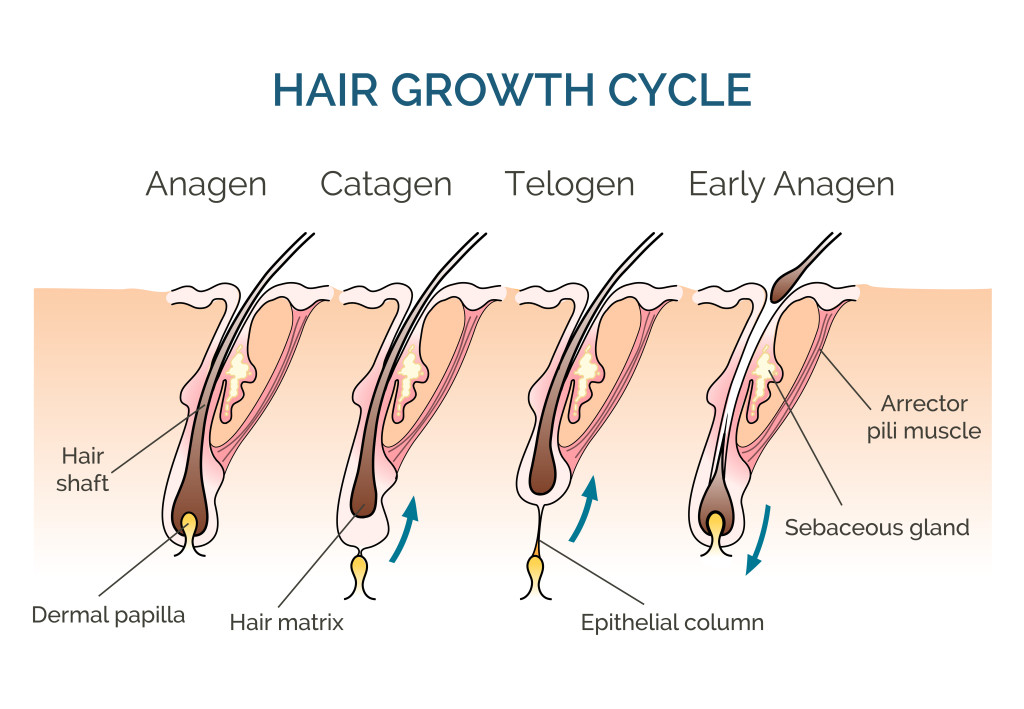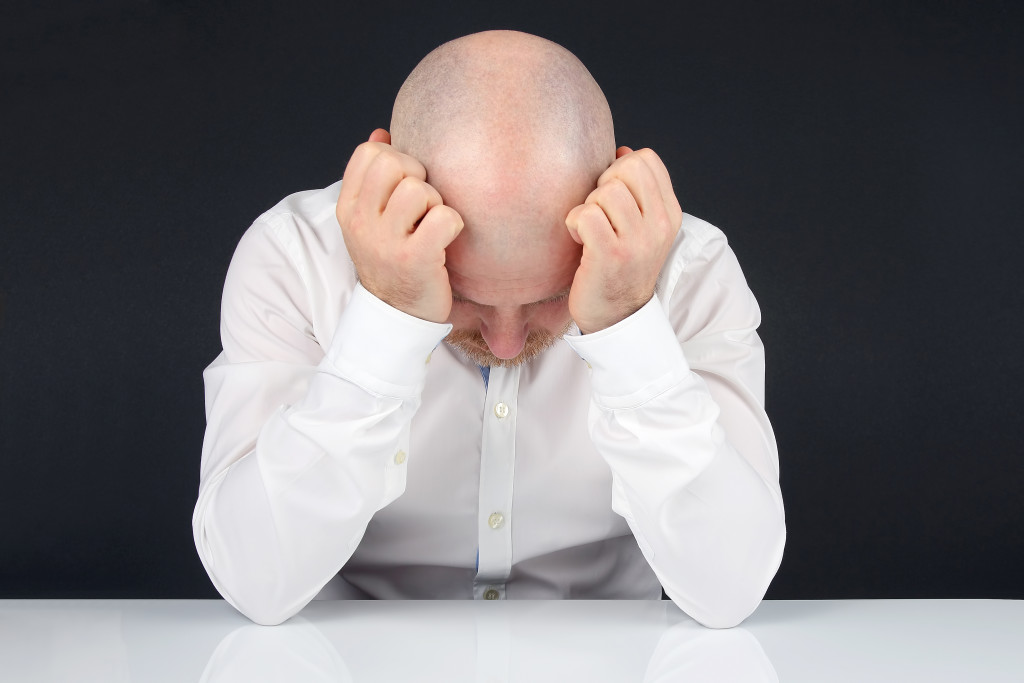Table of Contents (click to expand)
Male-pattern baldness (known as androgenetic alopecia) is a genetic trait. The condition is polygenic, which means it is influenced by multiple genes. Researchers have identified specific gene variants associated with an increased risk of male-pattern baldness. One particular gene is the AR gene on the X chromosome.
For many men, waking up with a receding hairline staring back at them from the mirror is a real-life struggle. We’re talking about male-pattern baldness. On the flip side, women seem to have a magical hair-retaining power, and only tend to experience diffuse hair loss.
Why is there a difference in who has hair at 60 and who doesn’t?
Your genes hold the answer.
Genetics Of Hair Loss
Male-pattern baldness (known as androgenetic alopecia) is a genetic trait. The condition is polygenic, which means it is influenced by multiple genes.
Researchers have identified specific gene variants associated with an increased risk of male-pattern baldness. One particular gene is the AR gene, found on the X chromosome.
“AR gene” is short for the Androgen Receptor gene. This gene makes a protein called the Androgen Receptor, a protein that plays a crucial role in the development and functioning of male sexual organs and other “male” physical traits, such as facial hair or a deepened voice.
The androgen receptor’s main job is to sense the hormones testosterone and dihydrotestosterone (DHT), both of which are commonly referred to as “male hormones”. Many organs and cells have the androgen receptor and are, as a result, sensitive to testosterone, including hair follicles.
DHT is a derivative of testosterone. Its effect on hair is that it can cause the hair follicles to shrink and the hair to thin over time, a process called miniaturization of hair follicles. Individuals who are genetically predisposed to baldness go through this process.
A comprehensive study involving 12,806 men of European ancestry revealed that individuals carrying a particular variant of this gene have over twice the risk of developing male-pattern baldness (MPB) than those who do not possess it.

The reason only men suffer from pattern baldness is the same reason they are biologically male in the first place.
Men inherit one X chromosome from their mother and one Y chromosome from their father. This gives them a higher chance of receiving the baldness-associated gene from their maternal side.
On the other hand, women inherit two X chromosomes, one from each parent. If one X chromosome carries the baldness-associated gene, while the other X chromosome lacks it, then that X chromosome may not manifest the effect of the baldness gene.
This genetic inheritance pattern explains why male-pattern baldness is more prevalent in men than women.
However, it’s essential to note that not all men carrying the baldness-associated gene will necessarily experience complete hair loss. There are multiple genes involved and how they all affect hair growth in combination will determine how you lose hair.
Interestingly, women also produce testosterone and DHT, so why doesn’t this condition affect them?
Besides the genetics, women produce far less DHT and testosterone than men. Women also have higher amounts of the hormones estrogen and progesterone, both of which play a protective role in keeping hair follicles healthy and functioning.
Women may starting losing their hair after menopause as the level of these two hormones dips.
Also Read: Why Do We Lose Hair From Our Head, But Not The Rest Of Our Body?
You Lose Hair As You Age
Hair loss tends to be a natural part of the aging process, affecting both men and women. Besides hormonal factors and genetics, aging creates fundamental changes in our bodies. Reduced blood flow can cause hair follicles to become smaller and produce thinner hair strands. Cellular changes, inflammation, and oxidative stress also play a role in weakening hair follicles as we get older, leading to gradual hair thinning and loss over time.
Also Read: Why Can’t Some Men Grow Beards?
Stress And Lifestyle Factors
Lastly, there are stress and lifestyle choices to consider, which can impact hair loss in both men and women. High levels of stress can trigger a specific type of hair loss. Because of stress, a significant number of hair follicles can enter the resting phase prematurely, leading to increased shedding. While this condition is usually temporary, chronic stress can exacerbate male-pattern baldness.
Additionally, certain lifestyle choices, such as smoking, excessive alcohol consumption, and a poor diet lacking essential nutrients, can negatively affect hair health. In short, unhealthy lifestyle choices can have a detrimental impact on hair growth for both men and women.

Conclusion
Taking everything into account, the divergence in hair loss patterns between men and women boils down to genetics, hormones and age.
Genetic predispositions to male-pattern baldness and amplified hair follicle sensitivity to DHT in males contribute to their elevated baldness rates. In contrast, women’s genetic intricacies provide added safeguards against hair loss.
Fortunately, there are several ways to prevent or reduce hair loss. There are multiple pills on the market that prevent hair from thinning, and there’s always the option for a hair transplant, which is permanent.
These can be expensive procedures, and for most of us, it would be unreasonable or unsustainable to spend that much on saving our scalps. Perhaps it’s time to accept the way our bodies naturally age, and find the beauty in ourselves each time we look in the mirror!
How well do you understand the article above!

References (click to expand)
- Male Pattern Baldness (Androgenic Alopecia). Cleveland Clinic
- What is male pattern hair loss, and can it be treated?. American Academy of Dermatology
- Male Pattern Baldness - Symptoms and Causes. University of Pennsylvania Health System
- Ustuner, E. T. (2013, October). Cause of Androgenic Alopecia. Plastic and Reconstructive Surgery Global Open. Ovid Technologies (Wolters Kluwer Health).
- How stress causes hair loss.
